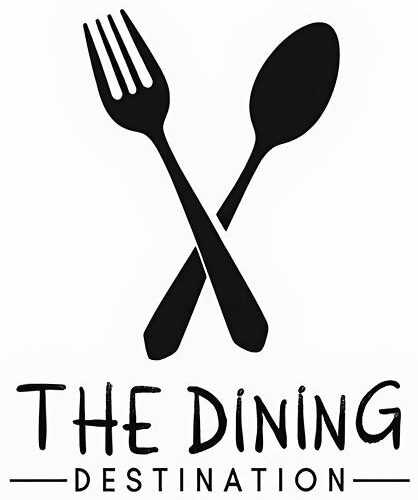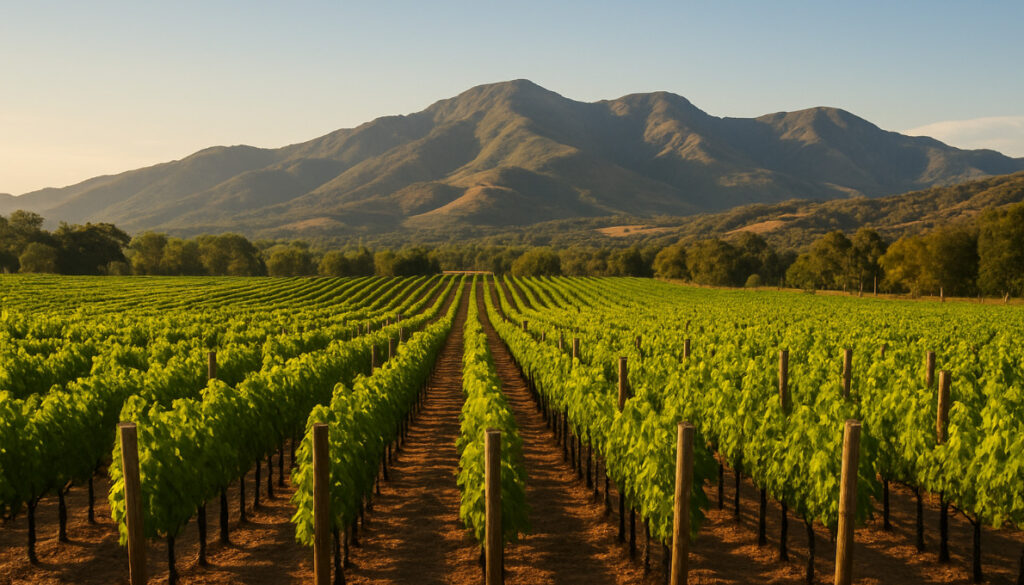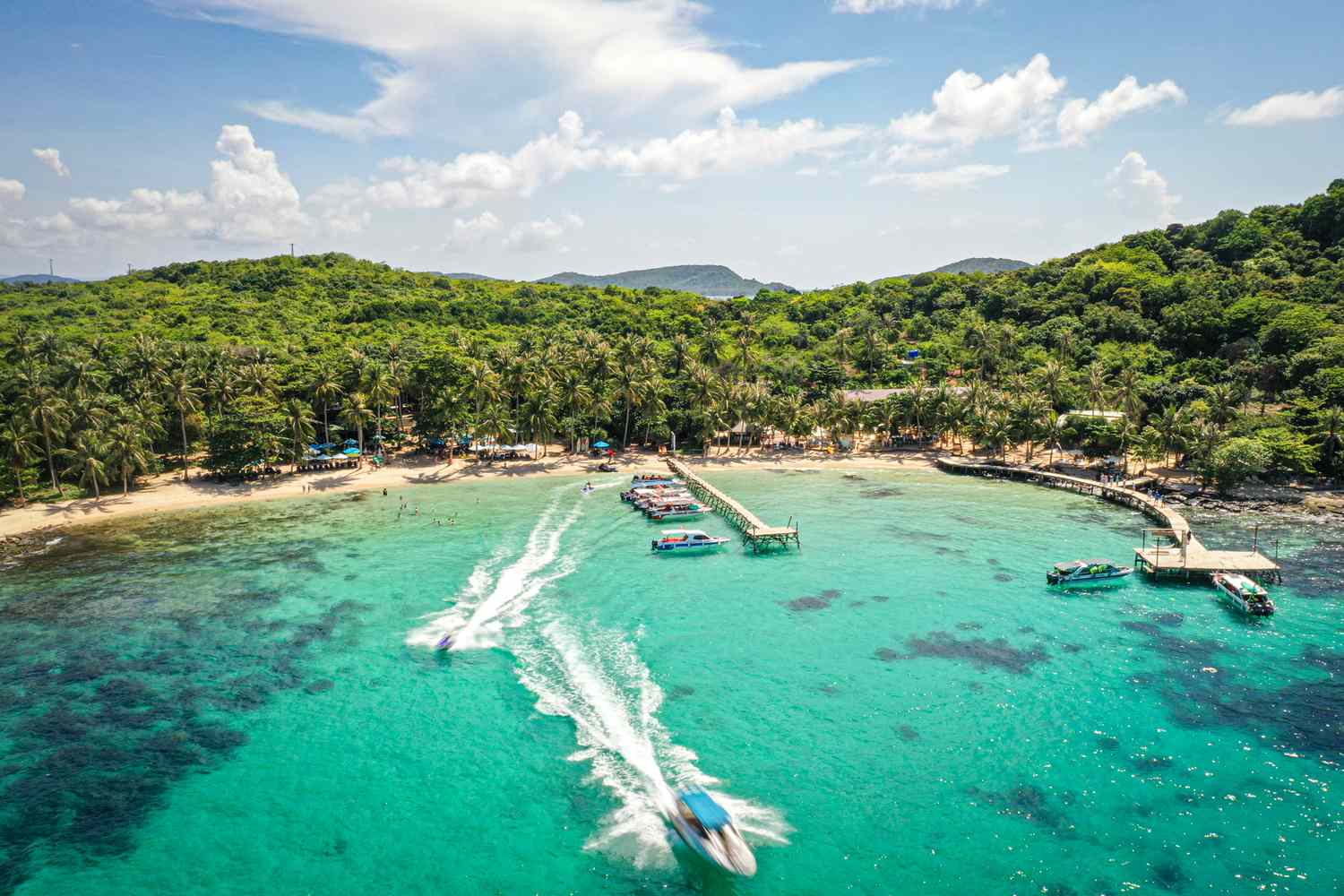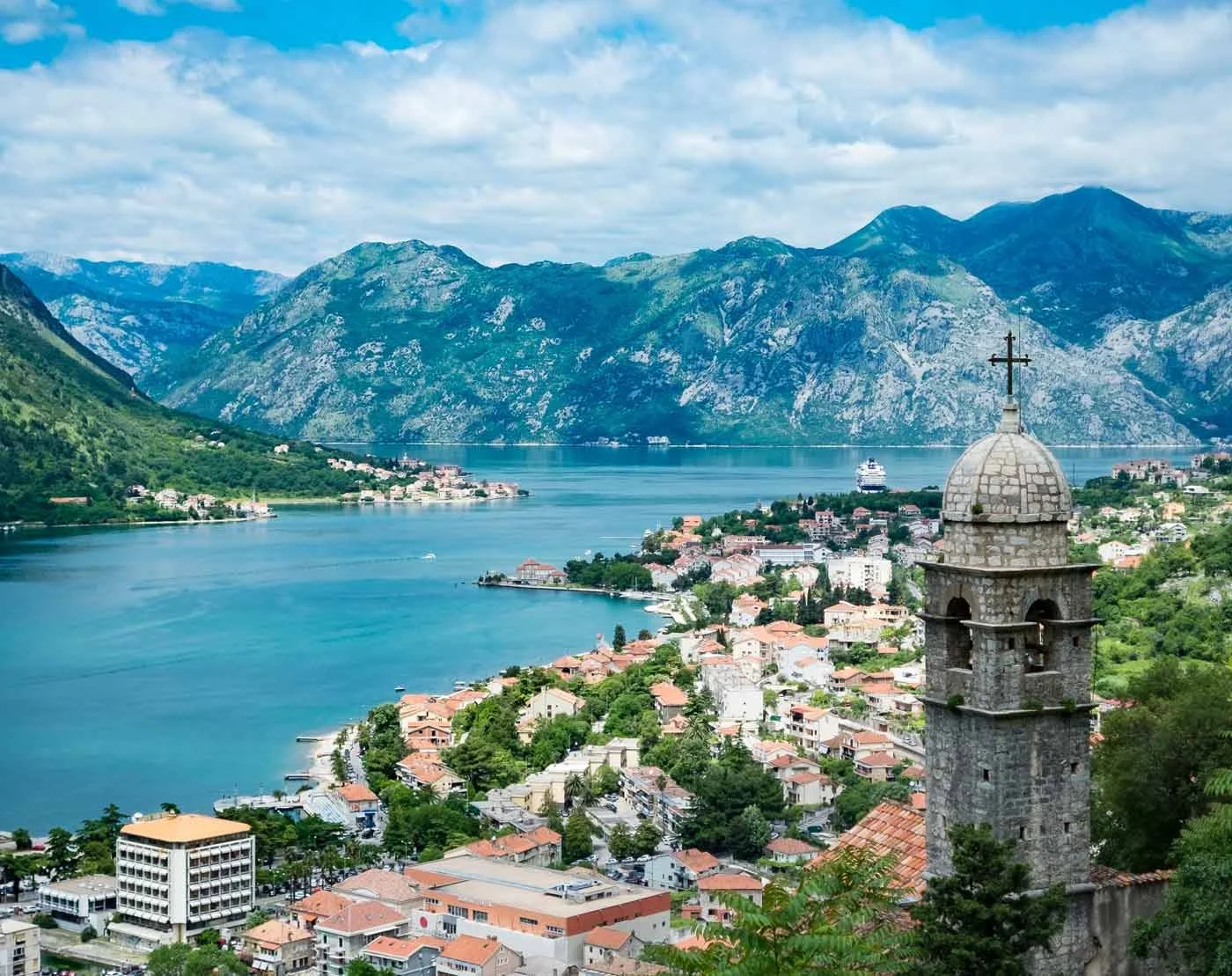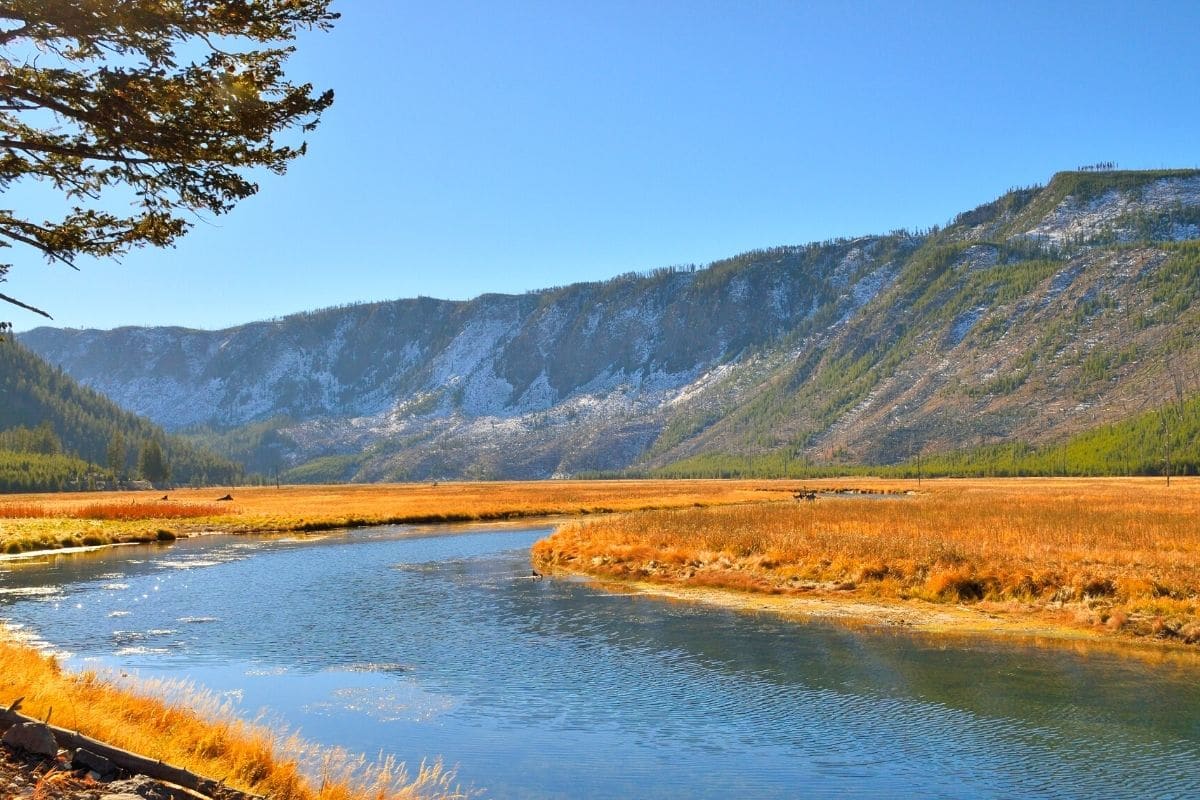Exploring the World’s Best Places for Wine
Wine lovers, pack your bags! The world is brimming with extraordinary vineyards waiting to be finded. From sun-drenched hillsides in Italy to misty valleys in New Zealand, the best places for wine offer so much more than just delicious tastings.
The global map of wine excellence stretches across continents, each region telling its own unique story through the bottle. In Tuscany’s rolling hills, centuries-old traditions produce the robust Chianti Classico that pairs perfectly with the region’s rustic cuisine. Meanwhile, Bordeaux stands as France’s château country, where legendary estates craft complex red blends that have defined excellence for generations.
Crossing the Atlantic, Napa Valley shines as America’s wine jewel with over 400 wineries nestled between mountain ranges. For something truly historic, Portugal’s Douro Valley boasts the world’s oldest officially designated wine region, where terraced vineyards have clung to steep riverbanks since 1756.
High in the Andes, Mendoza’s vineyards produce flavored Malbec under clear blue skies, while Willamette Valley has transformed Oregon into Pinot Noir paradise with 700 wineries dedicated to this delicate grape. For something truly distinctive, Santorini’s volcanic soils yield crisp Assyrtiko wines that capture the essence of this Greek island.
South Africa’s Stellenbosch region blends European influence with African terroir in its signature Pinotage wines. Along Germany’s Mosel River, impossibly steep slopes produce Rieslings of remarkable precision, and at the bottom of the world, Marlborough’s bright sunshine creates the distinctive Sauvignon Blanc that put New Zealand on the wine map.
Wine tourism is the perfect blend of sensory pleasure and cultural immersion. The best places for wine invite you to experience not just flavors, but connections—to the land, the winemakers, and traditions that sometimes stretch back thousands of years. You’ll find yourself wandering through medieval villages in Tuscany, chatting with multi-generation winemakers in Bordeaux, or marveling at sustainable innovations in New Zealand.
As the ancient Greek physician Hippocrates wisely noted, “Wine, in the right dose, cures several diseases.” While modern medicine might not prescribe Cabernet for your ailments, there’s undeniable therapy in savoring a glass while gazing across the very vineyard that produced it.
Wine’s geography spans six continents, with Old World regions (Europe) generally emphasizing tradition and terroir—that magical combination of soil, climate, and human touch that creates distinctive character. New World regions often accept innovation while honoring the fundamentals that make great wine possible.
Planning your wine trip? Timing matters. Harvest season (typically fall in the Northern Hemisphere, spring in the Southern) buzzes with energy as grapes come in and production begins, though crowds and higher prices follow. Spring brings beautiful vineyard landscapes with fewer tourists, while winter offers intimate tastings with winemakers who have more time to chat.

Old World Icons: Europe’s Timeless Best Places for Wine
Europe’s wine regions feel like stepping into a living history book. Imagine vineyards where Roman soldiers once planted vines, or medieval monks perfected fermentation techniques. These best places for wine aren’t just about what’s in your glass – they’re about centuries of tradition, culture, and a deep connection to the land.
In Europe, you’ll notice something interesting – wines are typically named for their regions rather than grape varieties. This reflects the European belief that terroir (that magical combination of soil, climate, and tradition) is what truly makes each wine special.
| Characteristic | Old World Wine | New World Wine |
|---|---|---|
| Naming convention | Region-based (e.g., Bordeaux, Chianti) | Grape variety-based (e.g., Cabernet Sauvignon, Chardonnay) |
| Philosophy | Terroir-driven, tradition-focused | Innovation and technology-driven |
| Typical style | More restrained, higher acidity, lower alcohol | Bolder fruit flavors, higher alcohol, more oak influence |
| Regulations | Strict appellation rules on varieties and methods | More flexible production guidelines |
| Age of industry | Centuries to millennia old | Decades to a few centuries old |
| Notable regions | Bordeaux, Burgundy, Tuscany, Rioja, Mosel | Napa Valley, Barossa Valley, Mendoza, Marlborough |
Bordeaux, France – Château Country
If wine regions were celebrities, Bordeaux would be royalty. This legendary region produces enough wine annually (7-8 billion bottles!) to give everyone on Earth a bottle. Split by the Gironde Estuary, Bordeaux offers two distinct wine personalities.
On the Left Bank (including Médoc and Graves), Cabernet Sauvignon rules, creating powerful, structured wines built to age. Cross over to the Right Bank (Saint-Émilion and Pomerol), and you’ll find softer, more approachable Merlot-based blends that often charm in their youth.
“Bordeaux isn’t just about wine—it’s about history, architecture, and gastronomy,” a local guide at Château Pichon Baron told me during my last visit. “Each château tells a unique story through its wine.”
Don’t miss La Cité du Vin, Bordeaux’s striking contemporary wine museum. This architectural marvel looks like wine swirling in a glass and offers interactive exhibits exploring wine throughout human history. For the full experience, visit during harvest (September-October) when the countryside buzzes with activity and many châteaux host special events where you can even participate in grape picking.
Tuscany, Italy – Chianti & Super Tuscans
Italy leads the world in wine production, with vineyards stretching across 1.7 million acres. Among these, Tuscany stands as the quintessential Italian wine destination – those rolling hills between Florence and Siena that look straight out of a Renaissance painting? That’s Chianti Classico country, where Sangiovese grapes thrive in the warm Mediterranean sunshine.
Tuscany offers remarkable diversity beyond Chianti. Visit Montalcino for powerful Brunello, a wine so structured it requires years of aging before release. Or explore Montepulciano for neat Vino Nobile. Along the coast, Bolgheri’s Super Tuscans like Sassicaia and Ornellaia revolutionized Italian winemaking by incorporating French varieties like Cabernet Sauvignon and Merlot – a move once considered winemaking heresy!
The September Impruneta Grape Festival offers a perfect chance to immerse yourself in local wine culture. When hunger strikes, pair your tastings with pappardelle al cinghiale (wild boar pasta) or a massive bistecca alla fiorentina (Florentine steak) for the full Tuscan experience.
“Our wines express our territory,” explains the estate manager at Castello del Trebbio, an ancient castle-turned-winery near Florence. “The same hills that inspired Renaissance artists now produce wines that capture that beauty in a bottle.”
Rioja, Spain – Age-worthy Tempranillo
Spain’s Rioja region has earned its place among the best places for wine through exceptional Tempranillo-based reds that can age beautifully for decades. Divided into three subregions (Rioja Alta, Rioja Alavesa, and Rioja Baja), each area contributes different characteristics to the final wines.
What makes Rioja special is its aging classification system. Gran Reserva rules are particularly strict – these wines must spend at least two years in oak barrels and three more years in bottle before release. White Gran Reservas need four years of total aging with at least six months in oak. This patient approach creates wines of remarkable complexity that evolve beautifully over time.
The region offers a fascinating architectural contrast – ultramodern wineries like Bodegas Ysios (resembling a wave of wood and titanium) and Marqués de Riscal (designed by Frank Gehry with ribbons of colored titanium) sit alongside centuries-old cellars dug into the earth. The region’s tapas culture makes food pairing effortless – simply follow locals from bar to bar, sampling pintxos (Basque tapas) with glasses of crisp whites or aged reds.
“Rioja balances tradition with innovation,” notes a winemaker from Bodegas Muga. “Our wines honor our past while looking to the future.”
Douro Valley, Portugal – Port & River Views

The Douro Valley holds a special distinction as the world’s oldest officially demarcated wine region, established back in 1756. This UNESCO World Heritage site features dramatic terraced vineyards carved into near-vertical hillsides along the winding Douro River – a landscape that will leave you breathless (and not just from climbing those steep vineyards).
While internationally renowned for rich, fortified Port wines, the region increasingly produces outstanding dry reds and whites from indigenous varieties like Touriga Nacional, Touriga Franca, and Tinta Roriz. The N-222 highway between Pinhão and Régua has been named the world’s most beautiful drive, offering postcard-worthy views around every bend.
River cruises provide a relaxing way to experience the Douro, with stops at quintas (wine estates) along the way. In Porto, historic Port houses like Graham’s 1890 Lodge or Sandeman offer traditional tastings in atmospheric cellars, while modern venues like Espaço Porto Cruz combine Port with multimedia exhibitions and soulful fado music performances.
“The Douro Valley represents the perfect harmony between human ingenuity and nature’s gifts,” explains a winemaker from Quinta do Crasto. “These terraces have been cultivated for centuries, creating wines that capture our history in every glass.”
Mosel, Germany – Slate-Steeped Riesling
Germany’s Mosel Valley produces some of the world’s most delicate, ethereal Rieslings, grown on slopes so steep (some reaching 75 degrees) that they make you dizzy just looking at them. These vertiginous vineyards require almost all work to be done by hand – a labor of love that has continued for centuries.
The region benefits from two natural advantages: the winding Mosel River reflects sunlight back onto the vines like a mirror, while heat-retentive blue and red slate soils store warmth during the day and release it at night, helping grapes ripen in this cool climate. This special environment creates Rieslings of extraordinary balance, featuring vibrant acidity offset by varying levels of residual sugar.
Historic estates like Dr. Loosen, Schloss Johannisberg, and Von Winning showcase diverse styles, from bone-dry Grosses Gewächs to lusciously sweet Trockenbeerenauslese. The charming medieval town of Bernkastel-Kues makes an ideal base for exploration, with its half-timbered houses and easy access to vineyards.
The region offers excellent bike trails along the river, allowing you to work off your wine tastings while enjoying spectacular views. “Mosel Rieslings are liquid terroir,” says a winemaker from Weingut Dr. Loosen. “Our wines express the pure essence of the vineyard—the slate, the river, the steep slopes—all captured in a glass.”
Best Places for Wine in the United States
America’s wine scene has blossomed into a vibrant mix spanning from coast to coast. With 267 American Viticultural Areas (AVAs) across 34 states, wine enthusiasts have plenty to explore. While California dominates with about 85% of the nation’s production, you’ll find exceptional best places for wine throughout the country. American wines typically follow New World conventions, highlighting grape varieties on labels rather than regions, though the unique characteristics of place remain crucial to serious winemakers.
Napa Valley, California – Cabernet Capital
Just an hour’s drive north of San Francisco lies America’s wine paradise. Napa Valley packs over 400 wineries and 90 urban tasting rooms into a relatively compact area, creating the country’s most comprehensive wine tourism experience.
Though Cabernet Sauvignon stands as the undisputed king here, Napa’s talented vintners craft exceptional wines from more than three dozen grape varieties. Pioneering estates like Robert Mondavi and Stag’s Leap Wine Cellars put Napa on the global map, while today’s boutique producers continue pushing quality boundaries ever higher.
“Napa Valley isn’t just about making great wine—it’s about creating memorable experiences,” explains a representative from Frog’s Leap winery. “We want visitors to connect with the land and understand why this place produces such extraordinary wines.”
For a truly magical perspective, book a sunrise hot air balloon ride that floats you gently above the morning mist-covered vineyards. Later, climb aboard the Napa Valley Wine Train, where restored vintage carriages serve gourmet meals paired with local wines as you rumble through picturesque landscapes.
Don’t let Napa’s luxury reputation scare your wallet – many wineries offer reasonably priced tastings if you venture beyond the most famous names, particularly in the less-crowded southern and eastern sections of the valley.
Sonoma County, California – Laid-back Diversity
While neighboring Napa often steals the spotlight, Sonoma County offers equally impressive landscapes with a more relaxed, down-to-earth vibe. Spanning 60,000 acres with over 425 wineries across 19 distinct AVAs, Sonoma showcases remarkable diversity within a single county.
The newly designated Petaluma Gap AVA harnesses cool ocean breezes to grow exceptional Pinot Noir, Chardonnay, and Syrah. Meanwhile, in warmer inland areas like Dry Creek Valley, gnarly century-old vines produce Zinfandel with incredible depth and character.
“What makes Sonoma special is our diversity,” says a local vintner with a warm smile. “Within a 30-minute drive, you can experience completely different microclimates and wine styles, from cool-climate Pinot Noir near the coast to bold Cabernet in the mountains.”
Sonoma’s farm-to-table philosophy extends beyond wine to its many outstanding restaurants, making it a complete culinary destination. Guided bike tours offer an eco-friendly way to experience the region’s beauty while visiting multiple wineries without worrying about driving. For the full experience, time your visit during Sonoma County Wine Month in October, when harvest activities and special events create a festive atmosphere.
Willamette Valley, Oregon – Pinot Paradise
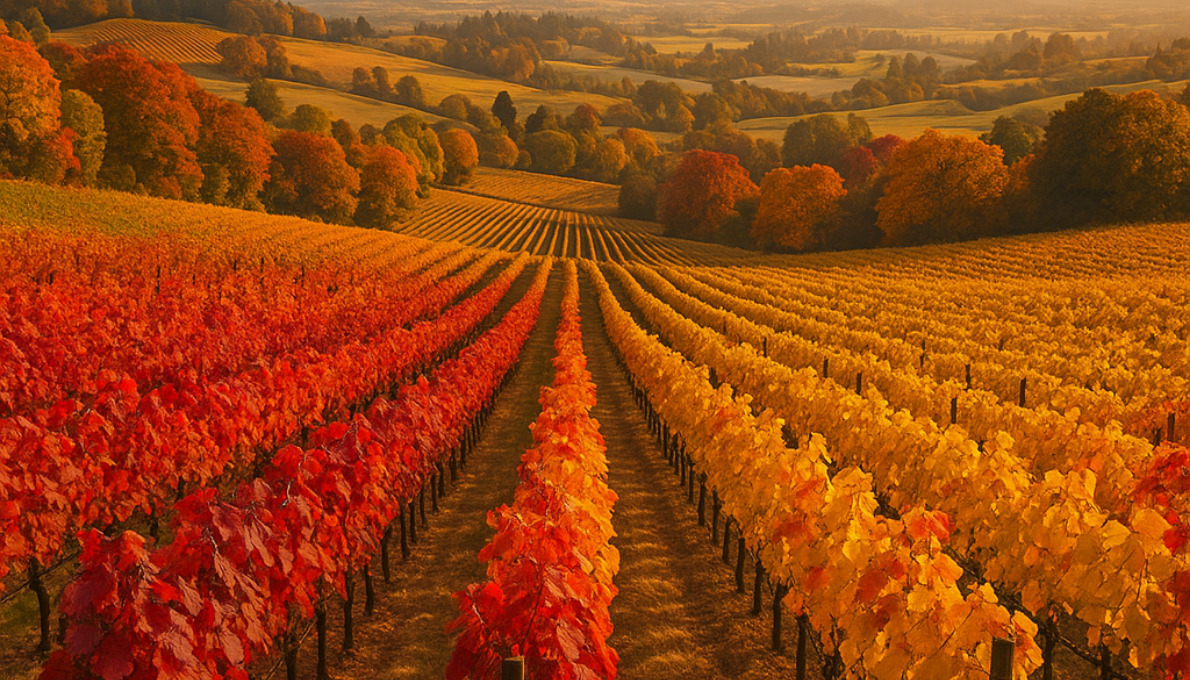
Oregon’s Willamette Valley has emerged as one of the world’s most exciting Pinot Noir regions, with nearly 700 wineries dotting a 150-mile corridor. The region’s cool climate and fascinating soil diversity—including volcanic basalt, marine sediment, and wind-blown loess—create perfect conditions for this famously fickle grape.
The valley encompasses 11 sub-AVAs, each with distinctive personalities. The Dundee Hills produce neat, red-fruited Pinots from iron-rich volcanic soils, while Eola-Amity Hills creates more structured wines influenced by cooling winds that funnel through the Van Duzer Corridor.
Pioneering wineries like Domaine Serene and Domaine Drouhin showcase the region’s world-class potential, while smaller producers like Brooks Wine offer intimate tasting experiences in beautiful settings. The annual Willamette Valley Pinot Noir Auction highlights the region’s finest limited-production wines, often unavailable elsewhere.
In a wonderful celebration of diversity, the world’s first Queer Wine Fest has become an annual event in Willamette Valley. This inclusive gathering features LGBTQ+ winemakers and allies, offering tastings, educational sessions, and community-building in a welcoming atmosphere.
For visitors without a car, organized tours from Portland provide convenient access to multiple wineries. Consider combining your wine experience with outdoor activities like waterfall hikes in the nearby Cascade Mountains or visits to Portland’s renowned food and craft beer scenes.
Finger Lakes, New York – Riesling & Waterfalls
The Finger Lakes region in upstate New York encompasses more than 100 wineries, breweries, and distilleries clustered around eleven glacial lakes. This 3,000-square-mile area has blossomed into the East Coast’s premier cool-climate wine region, particularly renowned for crisp, vibrant Riesling.
Dr. Konstantin Frank transformed the region in the 1950s by introducing European vinifera varieties, proving they could thrive in the challenging climate. Today, his legacy continues at Dr. Konstantin Frank Winery, while producers like Fox Run Vineyards push quality boundaries with each vintage.
Beyond Riesling, look for excellent Gewürztraminer, Cabernet Franc, and ice wine—a sweet dessert wine made from grapes frozen on the vine. The region’s unique microclimate, moderated by the deep lakes, creates ideal conditions for these varieties.
“Our cool climate gives our wines natural acidity and balance,” explains a winemaker from the region. “We’re not trying to be California or France—we’re creating wines that express the unique character of the Finger Lakes.”
The region offers more than wine alone—combine tastings with outdoor trips, hiking to gorgeous waterfalls or boating on pristine lakes. The Finger Lakes Wine Trail provides a structured way to explore, with themed events throughout the year highlighting seasonal specialties.
Yakima Valley, Washington – Craft Reds & Beer Stops
Washington State ranks as America’s second-largest wine producer, with the Yakima Valley serving as its viticultural heart. This 70-mile stretch contains 90 wineries and over a third of the state’s vineyard acreage, producing exceptional Merlot, Syrah, and Cabernet Sauvignon.
The region’s dramatic daily temperature swings—hot, sunny days followed by cool nights—create ideal conditions for developing complex flavors while maintaining natural acidity. Pioneering wineries like Chateau Ste. Michelle established Washington’s reputation for quality, while smaller producers continue experimenting with diverse varieties and styles.
Don’t miss the Spring Barrel Tasting in April, when wineries offer samples directly from barrels, providing a sneak preview of upcoming vintages. During the fall “Catch the Crush” event, visitors can participate in grape stomping competitions that might remind you of that famous “I Love Lucy” episode.
Yakima Valley’s status as America’s largest hop-growing region makes it a paradise for craft beer enthusiasts too. As locals say with a wink, “Perish the thought” of skipping the beer trail entirely—it provides a refreshing alternative when your palate needs a break from wine.
“Washington wines offer exceptional value,” notes a local winemaker. “We produce world-class wines that often cost significantly less than their counterparts from more famous regions.”
For travelers wanting to combine multiple wine experiences, consider checking out More info about Best Food Destinations to plan the perfect culinary getaway alongside your wine trips.
New World Marvels Around the Globe
While Europe’s wine regions boast centuries of tradition, the New World has quickly earned its place among the best places for wine through bold innovation and perfect growing conditions. These regions typically accept experimentation, creating distinctive styles that have captured global attention in remarkably short timeframes.
Mendoza, Argentina – Malbec at Altitude
With the majestic Andes providing a dramatic backdrop, Mendoza has transformed a once-obscure French grape into Argentina’s signature wine. As the country’s fifth-largest wine producer globally, this high-altitude region accounts for about 80% of Argentina’s total production.
What makes Mendoza truly special is its elevation. Vineyards stretch from 2,000 to 5,000 feet above sea level, creating a unique growing environment. The intense mountain sunlight promotes perfect ripening, while cool nighttime temperatures preserve the grapes’ natural acidity. This balance produces Malbecs with remarkable depth and freshness.
“Argentina is by far the best value-for-the-buck option!” says a local tour operator with obvious enthusiasm. “You can experience world-class wines and cuisine at a fraction of European prices.” Indeed, many wineries offer exceptional tastings for $20-40, often including generous pours alongside gourmet food pairings.
The Uco Valley, with its higher elevation, produces more structured, neat Malbecs, while Luján de Cuyo creates richer, more concentrated expressions. Small-group tours like those offered by Trout & Wine provide in-depth exploration of these diverse terroirs. Beyond Malbec, don’t miss the aromatic Torrontés whites and increasingly impressive Cabernet Franc that showcase the region’s versatility.
Marlborough, New Zealand – Sauvignon Blanc Superstar
New Zealand’s Marlborough region single-handedly revolutionized how the world thinks about Sauvignon Blanc. This remote corner of the South Island creates whites with explosive aromatics and vibrant acidity that have become some of the world’s most recognizable wines.
The region’s magic comes from its extreme climate. “What makes Marlborough special is our intense sunlight, cool nights, and long growing season,” explains a representative from Craggy Range. “This creates wines with remarkable flavor intensity while maintaining freshness.”
Marlborough isn’t one-dimensional – it contains several distinct sub-regions. The Wairau Valley produces riper, more tropical-fruited wines, while the nearby Awatere Valley creates more herbaceous, mineral-driven styles influenced by its proximity to the ocean. That distinctive sea-spray freshness has become part of Marlborough’s signature style.
While Sauvignon Blanc put Marlborough on the map, don’t overlook the region’s outstanding Pinot Noir, Chardonnay, and aromatic varieties. Cellar-door cycling provides an ideal way to explore, with flat terrain and numerous wineries within easy riding distance. When your palate needs a break, the nearby town of Nelson offers excellent craft breweries, while Abel Tasman National Park provides spectacular hiking trails.
Barossa Valley, Australia – Old Vines, Big Shiraz

The Barossa Valley holds a unique distinction in the wine world – it’s home to some of the planet’s oldest continuously producing vines. When phylloxera devastated European vineyards in the late 19th century, Australia’s isolation became its greatest asset. Today, you can sample Shiraz from vines planted as far back as the 1840s – true living history in a glass.
These ancient, dry-grown centenarians (non-irrigated vines) produce tiny yields of concentrated fruit. The result? The powerful, complex wines that have made Barossa famous worldwide. While bold Shiraz remains the flagship, the region also excels with Grenache, Mataro (Mourvèdre), and Semillon.
“Barossa represents the heart and soul of Australian wine,” says a passionate representative from d’Arenberg. “Our old vines connect us directly to our pioneers, while our innovative spirit keeps us looking forward.”
A visit to Seppeltsfield offers a truly unique experience – the opportunity to taste a 100-year-old tawny port from your birth year, drawn directly from the barrel. The region’s strong German heritage influences its food culture too, with excellent smoked meats, hearty breads, and artisanal cheeses available at local markets.
Stellenbosch & Franschhoek, South Africa – Cape Blends & Culture
South Africa’s winemaking history dates back to the 1600s, with Stellenbosch and Franschhoek standing as the crown jewels of the Western Cape. These historic areas combine stunning mountain scenery with distinctive Cape Dutch architecture and world-class wines.
Pinotage – a cross between Pinot Noir and Cinsault created in South Africa in 1925 – serves as the country’s signature variety. Though sometimes challenging, modern producers have refined this grape into complex wines that showcase its unique character. “Cape Blends,” which incorporate Pinotage with international varieties, offer fascinating expressions of South African terroir.
The charming Franschhoek Wine Tram provides a hop-on-hop-off experience visiting multiple wineries without driving concerns. This open-air tram offers different routes through the valley, letting you customize your experience based on preferred wine styles.
“South African wines represent incredible value,” notes a wine educator from Klein Constantia with obvious pride. “We produce world-class wines that often cost half what you’d pay for equivalent quality from more famous regions.”
The region’s French Huguenot heritage has created a distinctive food culture that pairs beautifully with local wines. Many wineries offer exceptional dining experiences, from casual garden cafés to fine-dining restaurants with panoramic mountain views of the stunning landscape.
Casablanca Valley, Chile – Cool-Climate Whites
Just 30 minutes from the Pacific Ocean, Chile’s Casablanca Valley has emerged as South America’s answer to Burgundy and Sonoma. Morning fog rolls in from the ocean, moderating temperatures and creating ideal conditions for aromatic whites and neat Pinot Noir.
Pioneering winemakers recognized the region’s potential in the 1980s, planting Chile’s first cool-climate Chardonnay and Sauvignon Blanc. Today, Casablanca has established itself as a world-class wine destination, with producers like Viña Casas del Bosque and Matetic leading quality efforts.
The region has acceptd organic and biodynamic practices, with many producers abandoning conventional farming to better express their unique terroir. This commitment to sustainability extends to winery operations, with solar power and water conservation increasingly common.
“Chile has subtly established itself as an irresistible wine powerhouse,” explains a representative from Viña Errázuriz. “Our geographic isolation protected us from phylloxera, allowing us to grow ungrafted vines in pristine conditions.”
Complete your Casablanca visit with a trip to nearby Valparaíso, a colorful UNESCO World Heritage port city known for its bohemian atmosphere and vibrant street art. The region’s coastal cuisine, featuring fresh seafood harvested daily, pairs perfectly with Casablanca’s crisp, mineral-driven whites that capture that distinctive sea-spray freshness.
Budget-Friendly & Emerging Best Places for Wine
Not every remarkable wine journey requires a platinum credit card. Many best places for wine deliver exceptional experiences without the hefty price tag, offering free or budget-friendly tastings, affordable places to stay, and easy-to-steer transportation. These up-and-coming or lesser-known regions often provide something even more valuable than savings – authentic, personal experiences far from the tourist crowds.
Southern Rhône, France – Free Grenache Tastings
The Southern Rhône Valley serves as France’s sunny, affordable alternative to pricier wine regions, with numerous village tasting rooms offering complimentary samples in charming locales like Gigondas and Châteauneuf-du-Pape. This Mediterranean region specializes in generous, spice-forward red blends built around Grenache, complemented by crisp rosés perfect for warm afternoons.
“It’s definitely southern France, hands down,” recommends a veteran wine educator when asked about wallet-friendly wine destinations. “The climate is beautiful, the people are friendly, and you can find numerous free tastings in most villages.”
Make the historic city of Avignon your home base, where you can marvel at the magnificent Papal Palace between wine excursions. Alternatively, the smaller town of Orange offers a more intimate experience featuring its remarkably preserved Roman theater. Public buses connect major towns to wine villages, making car-free exploration entirely possible with a bit of advance planning – just be sure to research routes beforehand, as rural services can be limited.
The region’s vibrant markets provide delicious opportunities to sample local specialties like fruity olive oils, fragrant lavender honey, and tangy goat cheeses – all perfect companions to the area’s robust wines. For the best balance of pleasant weather and value, aim for shoulder seasons (April-May or September-October) when summer crowds have thinned but the Mediterranean sunshine remains.
Kakheti, Georgia – Cradle of Qvevri Wine
For adventurous wine lovers, Georgia (the country, not the state) offers an unparalleled journey to the very birthplace of wine itself. Archaeological evidence dates Georgian winemaking to approximately 6000 BCE, with the traditional qvevri method – fermenting and aging wine in clay vessels buried underground – still practiced much as it was thousands of years ago.
The Kakheti region, east of the capital Tbilisi, forms Georgia’s winemaking heart. Here, indigenous varieties like deep Saperavi (red) and versatile Rkatsiteli (white) create wines unlike anything in the Western wine world. The region’s distinctive amber or “orange” wines – white varieties fermented with skin contact in qvevri – have recently captured international attention, though they’ve been Georgian staples for millennia.
“Georgian wine tourism is incredibly affordable,” notes a frequent visitor. “Tasting fees are minimal or waived with purchase, and you can find comfortable accommodations for $30-40 per night.” Traditional Georgian hospitality centers around the supra feast – a seemingly endless parade of dishes accompanied by heartfelt toasts – providing a cultural immersion alongside wine exploration.
Several companies offer convenient day trips from Tbilisi, making car-free exploration straightforward. For deeper experiences, small-group tours visiting family wineries provide authentic insights into 8,000 years of winemaking tradition and the warm Georgian spirit.
Vinho Verde, Portugal – Light & Low-Price
Portugal’s verdant Vinho Verde region delivers exceptional value for cost-conscious wine travelers. This lush, green countryside in the country’s northwest produces refreshing, slightly effervescent whites with a gentle spritz – perfect for afternoon sipping. Despite their quality and food-friendly nature, these wines typically cost just €3-5 per bottle in local shops.
“The Portuguese side of the Iberico region is about 30% cheaper than Spain’s,” advises a frequent visitor. Beyond its signature young “green wines,” the region increasingly crafts more serious still whites and reds from indigenous varieties, all maintaining excellent price-quality ratios.
The scenic N-222 highway provides a spectacular route through rolling hills and river valleys, with numerous small producers offering tastings along the way. Many wineries welcome spontaneous visitors, though a quick call ahead ensures the warmest welcome. Balance your wine exploration with visits to historic towns like Guimarães, Portugal’s first capital, or the vibrant coastal city of Porto just a short drive away.
Seafood dominates local cuisine, with fresh Atlantic fish and shellfish that seem made to pair with Vinho Verde’s bright acidity. Budget travelers will appreciate the region’s affordable guesthouses and dining options, with excellent meals available for €15-20 in family-run restaurants where the owners might just share a glass with you.
Pico Island, Azores – Volcanic Vineyards
The remote Pico Island in Portugal’s Azores archipelago presents one of the world’s most striking and unusual wine landscapes. Here, vineyards grow within thousands of small, hand-built black basalt stone enclosures called currais, designed to protect delicate vines from harsh Atlantic winds and salt spray. This remarkable viticultural system, dating back 500 years, has earned well-deserved UNESCO World Heritage status.
Verdelho grapes thrive in this volcanic soil, creating mineral-driven whites and fortified wines reminiscent of Madeira but with their own distinct character. The island’s winemaking tradition nearly vanished in the late 19th century due to the devastating combination of phylloxera and emigration but has been lovingly revitalized in recent decades through dedicated preservation efforts.
“Pico represents wine growing at its most heroic,” explains a local producer. “Every stone in these walls was placed by hand, creating a cultural landscape that tells the story of generations of islanders and their relationship with this challenging environment.”
Complement your wine findies with whale watching excursions, invigorating hikes up the island’s towering volcano (Portugal’s highest peak), and refreshing swims in natural lava pools carved by the Atlantic. While reaching Pico requires some determination – typically flying to São Miguel or Terceira, then taking a connecting flight – the island’s unique wines and otherworldly landscapes amply reward adventurous travelers.
Loudoun County, Virginia – East-Coast Escape
Just an hour from Washington, D.C., Virginia’s Loudoun County offers an accessible wine getaway with more than 40 welcoming wineries and tasting rooms. This historic region excels with aromatic Viognier, neat Cabernet Franc, and robust Petit Verdot, alongside innovative blends that showcase Virginia’s distinctive terroir and growing confidence.
“Virginia wines have improved dramatically in recent years,” notes a wine educator from the region. “Our producers have identified the varieties and techniques that work best in our climate, creating wines with real character and sense of place that can stand alongside any in the world.”
The area’s proximity to the nation’s capital makes it perfect for weekend escapes, with picturesque historic towns, farm-to-table restaurants, and outdoor activities complementing the wine experience. Several companies offer guided tours, allowing visitors to sample widely without driving concerns.
For a truly indulgent experience, book a vinotherapy spa treatment, where wine byproducts are incorporated into massages and body treatments for their natural antioxidant properties. Many wineries also host sunrise yoga classes among the vines, thoughtfully combining wellness with wine appreciation in the rolling Virginia countryside.
Essential Wine Travel Tips & FAQs
Planning a successful trip to the best places for wine requires some preparation. Whether you’re organizing a dedicated wine vacation or incorporating vineyard visits into a broader itinerary, these tips will help you maximize your experience.

Practical Prep Before You Go
Before you start packing your bags for wine country, a little homework goes a long way. Many prestigious wineries in regions like Napa and Bordeaux fill their appointment books weeks or even months ahead, especially during peak seasons. Take some time to research opening hours, tasting fees, and reservation policies to avoid disappointment.
“I once drove an hour to visit a famous Tuscan winery only to find they were closed for a private event,” shares a seasoned wine traveler. “Now I always call ahead, even if their website says they’re open.”
Brushing up on basic wine vocabulary will improve your experience tremendously. Understanding terms like “terroir” (how a specific place influences the wine) and “vintage” (the year the grapes were harvested) will help you connect more deeply with what you’re tasting and communicate better with winery staff.
Wine regions face increasing environmental pressures, so consider supporting wineries practicing sustainable viticulture. Many regions now offer public transportation options or bike rentals, reducing your carbon footprint while enjoying the scenery at a more leisurely pace.
And perhaps most importantly – never drink and drive. Either designate a non-drinking driver in your group, use public transportation, or book guided tours that include transportation. Your safety and that of others should always come first.
Best Ways to Taste on Location
Finding the right balance between structured and spontaneous experiences creates the most memorable wine trips. Starting with a guided tour helps you get oriented to a region before venturing out on your own. Many areas offer excellent regional tasting centers where you can sample wines from multiple producers in one stop.
“Wine tasting is a marathon, not a sprint,” advises a veteran tour guide from Sonoma. “I see so many visitors try to cram eight wineries into a day, only to have their palates completely exhausted by lunchtime.”
Most experts recommend limiting yourself to three or four wineries per day, with breaks for food, water, and non-wine activities in between. This approach prevents palate fatigue and allows you to truly appreciate each wine’s unique characteristics.
Taking notes or using a wine app to photograph labels and record impressions helps immensely when you’re trying to remember that perfect Pinot Noir three wineries later. These notes become treasured souvenirs and helpful references when seeking out bottles to enjoy back home.
Local wine festivals offer fantastic immersion experiences, combining tastings with cultural traditions. Events like the Haro Wine Battle in Rioja, Spain, where participants douse each other with wine, or the more sedate harvest festivals throughout wine regions worldwide provide unforgettable cultural context to your tasting journey.
Shipping & Souvenir Hacks
Bringing home bottles from your trips requires some planning. If you’re flying, check your airline’s wine transport policies – some offer surprising perks. Alaska Airlines’ “Wine Flies Free” program allows passengers to check a case of wine at no charge from select West Coast cities, while other carriers offer specialized wine shipping boxes for purchase.
For the serious collector, investing in specialized luggage like the VinGardeValise or Wine Check provides peace of mind. These hard-sided cases with custom foam inserts protect your precious cargo from the rigors of baggage handling.
“After losing two bottles to breakage in my suitcase padded with clothes, I invested in proper wine luggage,” says a frequent wine tourist. “It’s paid for itself many times over in saved bottles and dry clothing.”
Many wineries can ship purchases directly to your home, though regulations vary widely depending on your destination state or country. International shipping gets even more complicated due to customs regulations, so ask detailed questions before assuming this option will work for you.
When bringing bottles across international borders, know your allowances. U.S. customs typically permits one liter duty-free per person, with reasonable duties on additional amounts for personal consumption. Other countries have their own regulations – research before you buy.
If bottle transport proves too challenging, consider alternative souvenirs. Wine-region cookbooks, local pottery, or even soil samples from favorite vineyards make meaningful mementos that slip easily into luggage without breakage concerns.
Frequently Asked Questions about Best Places for Wine
What’s the key difference between Old World and New World wine styles?
The distinction between Old World (primarily European) and New World wines comes down to philosophy as much as geography. European wines typically honor centuries of tradition, emphasizing the vineyard’s unique character over the grape variety. These wines often feature higher acidity, lower alcohol, and more subtle fruit flavors, letting mineral and earthy notes shine through.
“In Burgundy, we don’t make Pinot Noir – we make Gevrey-Chambertin, Vosne-Romanée, Chambolle-Musigny,” explains a French winemaker. “Each village expresses the grape differently because of our unique terroir.”
By contrast, New World regions in the Americas, Australia, New Zealand, and South Africa typically showcase bolder fruit flavors, higher alcohol content, and more pronounced oak influence. These wines usually highlight the grape variety on the label rather than the specific place.
That said, these lines are increasingly blurring as winemakers worldwide exchange knowledge and techniques. Many New World producers now focus on expressing specific vineyard sites, while some European winemakers accept modern technologies and bolder styles.
When is the best time of year to visit vineyards worldwide?
The perfect timing for your wine country visit depends entirely on what experiences you’re seeking. Harvest season brings electric energy to wine regions, with the excitement of bringing in the year’s crop and traditional festivals celebrating the bounty. This typically falls between August and October in the Northern Hemisphere and February to April in the Southern Hemisphere.
“Harvest is magical but hectic,” notes a winemaker from Oregon’s Willamette Valley. “If you want to see the action, it’s wonderful, but if you want relaxed, in-depth conversations with winemakers, come during a quieter season.”
Spring showcases vineyards at their most photogenic, with fresh green shoots and sometimes wildflowers blooming between rows. This season often features “bud break” celebrations and new vintage releases, with fewer tourists and more attentive service.
Winter visits provide the most intimate experiences, as tasting rooms are quietest and winemakers have more time for visitors. While the vineyards appear dormant, you’ll often get the most personal attention and sometimes access to library wines not normally available for tasting.
For region-specific recommendations, Mediterranean areas like Tuscany and Napa are most pleasant in May-June or September-October, avoiding summer’s extreme heat. Cool-climate regions like Germany’s Mosel or New York’s Finger Lakes shine during summer months when temperatures are most comfortable for exploration.
How can I explore top regions without renting a car?
Wine tasting and driving simply don’t mix, but fortunately, most major wine regions have developed excellent car-free options.
Guided tours operate everywhere from Champagne to Chile, ranging from intimate experiences with just a few guests to larger group outings. Small-group tours (8-12 people) often provide the perfect balance of personal attention and value, with knowledgeable guides who can tailor stops to your interests.
Public transportation works surprisingly well in some regions. Trains connect major towns in France’s Loire Valley, with local buses serving wine villages. The Napa Valley Wine Train offers a luxurious rail experience with winery stops, while buses link South Africa’s Cape Winelands towns.
Some regions feature unique transportation options that become attractions themselves. The Franschhoek Wine Tram in South Africa offers a hop-on-hop-off service to multiple wineries, while Portugal’s Douro Valley river cruises stop at riverside quintas (wine estates) for tastings with spectacular views.
Bicycle rentals work beautifully in flatter wine regions like Sonoma, Mendoza, and Marlborough, with many companies now offering e-bikes that make hills manageable even for casual cyclists. There’s something magical about pedaling quietly through vineyards, stopping whenever a view or tasting room catches your eye.
“Cycling through Carneros in Sonoma was the highlight of our California trip,” shares an enthusiastic visitor. “The gentle pace let us notice details we would have missed by car – the sound of wind in the vines, the scent of lavender plantings, even a family of quail crossing our path.”
Conclusion
Our journey through the best places for wine around the world shows that great wine destinations offer much more than exceptional bottles. They’re windows into local culture, history, and landscape—creating memories that linger long after your glass is empty.
Wine regions speak to us in different voices. There’s the hushed reverence of Bordeaux’s historic châteaux, the wild innovation of New Zealand’s Marlborough vineyards, and the sun-baked wisdom of Mendoza’s high-altitude malbec vines. Each tells a story centuries in the making, yet still evolving with every harvest.
At The Dining Destination, we believe exploring wine regions is one of travel’s greatest pleasures. Think about it—what other journey combines such stunning landscapes, meaningful cultural connections, remarkable food, and sensory findies in every glass? Wine travel engages all your senses while connecting you to both place and people.
The beauty of wine tourism lies in its flexibility. You might find yourself chatting with a fourth-generation winemaker in a cool underground cellar one day, then picnicking among flowering vines the next. Some travelers carefully plan tasting itineraries, while others prefer to wander country roads, finding family wineries by chance. Both approaches yield rich rewards.
Your wine journey should reflect your own interests and style. Love architecture? Prioritize regions with stunning winery designs like Rioja or Napa. Passionate about sustainable agriculture? Seek out biodynamic producers in Oregon or New Zealand. History buff? The ancient qvevri traditions of Georgia or the medieval cellars of Burgundy await your exploration.
Wine is ultimately about connection—to the land, to tradition, and to each other. The shared experience of tasting something delicious while learning its story creates bonds that transcend language and culture. Perhaps that’s why wine travelers so often become wine friends, sharing bottles and memories long after returning home.
Whether you’re a dedicated collector with a temperature-controlled cellar or someone who simply enjoys an occasional glass with dinner, the world’s wine regions welcome you with open arms and full glasses. The only question is: which bottle will inspire your next journey?
We’d love to hear about your favorite wine destinations or help with planning your next wine trip. Share your experiences in the comments below, and let’s continue exploring this wonderful world together, one vineyard at a time.
